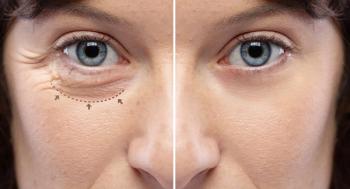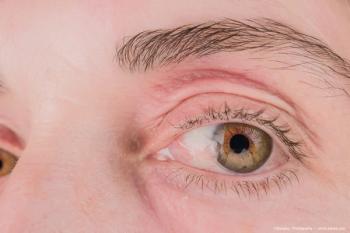
Mixing multifocal IOLs associated with high patient satisfaction
A mix-and-match approach to multi-focal IOL implantation using lenses based on two different optical principles provides excellent functional outcomes.
Boston-A mix-and-match approach to multifocal IOL implantation using lenses based on two different optical principles provides excellent functional outcomes and a high level of patient satisfaction, according to results of the European Multicenter Project.
Frank Goes Sr., MD, speaking at the annual meeting of the American Society of Cataract and Refractive Surgery (ASCRS), presented results from the prospective study that was launched in June 2006 and enrolled 234 patients at private and academic centers in Belgium, Germany, Italy, and Spain.
A total of 213 patients were operated on.
Data collection was by Web-based documentation. Functional assessments showed excellent results for near, intermediate, and distance uncorrected visual acuity (UCVA), along with a high reading speed, 89% rate of spectacle independence, and only a single complaint of a severe visual symptom. Importantly, 99% of patients said they would have the same procedure again, and 93% indicated they would recommend this type of surgery to friends, Dr. Goes said.
"The trend in presbyopia correction with multifocal IOLs is toward staged implantation, where the first lens is chosen according to the patient's lifestyle," said Dr. Goes, director and senior eye surgeon, Goes Eye Centre, Antwerp, Belgium, and one of 12 participating surgeons (Andreas Scheider, MD, Essen, Germany is principal investigator).
"The decision to use the same lens in the second eye or an IOL of another optical principle is based on the performance of the first lens," Dr. Goes said. "This approach offers the opportunity of fine-tuning the visual outcome that in turn should increase patient satisfaction.
"However, the question has been raised of whether the eyes and brain can tolerate two different IOLs," he added. "The results from the European Multicenter Project and other studies show that it is perfectly possible and results in high patient satisfaction."
Patients enrolled in the European Multicenter Project received either the silicone 3-piece version of the Tecnis multifocal IOL (ZM900) or the hydrophobic acrylic 3-piece model (ZMA00). The Tecnis multifocal IOLs distribute 50% of light for near and 50% for distance and feature a D add that is equivalent to 3.25 D at the spectacle plane. The multiple zones in the ReZoom multifocal IOL distribute light for near, intermediate, and distance. It provides a near add of 3.5 D, or 2.75 D at the spectacle plane.
Enrolled patients ranged in age from 40 to 80 years, and included cataract surgery patients and a minority of refractive lens exchange patients with high hyperopia. Mean power of the implanted lenses was 21 D, with a range from 7 to 32 D. The target refraction was emmetropia in 97% of eyes.
Preoperatively, monocular distance best-corrected visual acuity was 0.7, and about 25% of patients reported at least one optical visual symptom. Fluctuating acuity was most common (15%) followed by daytime glare (7%).
Mean incision size was 3 mm, and mean capsulorhexis size was 5.3 mm. In 88% of eyes the capsulorhexis was circular, and it was centered in 98% of eyes.
"After surgery, only minor decentration and tilt were recorded, and each in only 2% of eyes," Dr. Goes said.
In the non-interventional registry project, 191 patients were seen at a 30- to 60-day follow-up visit, and 152 patients were seen at a final visit after 120 to 180 days.
"This relatively high loss of patients to follow-up is explained by . . . the registry nature of this project," he said. "Patients were not scheduled for follow-up visits and just came back for routine examinations."
Newsletter
Don’t miss out—get Ophthalmology Times updates on the latest clinical advancements and expert interviews, straight to your inbox.










































